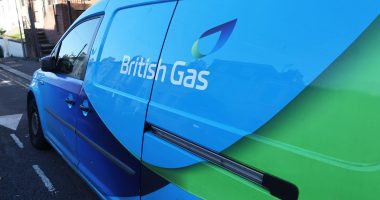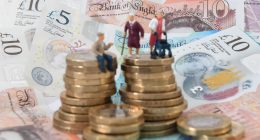
The airlines of the United States have extra-special status. How special? Many of them may get a second pile of coronavirus relief money before citizens who can’t afford to fly get another $1,200 check.
But as carriers have made their case to legislators in recent months, some have also been pitching banks — using their customers’ faith in free travel as a kind of collateral.
United and Delta have been using their frequent-flier programs as support for their efforts to raise more cash with the help of Goldman Sachs and other banks. And the boasting the two carriers have done as they’ve raised billions of dollars amounts to this: They and their lenders think they have customers, over 100 million of us in each program, right where they want us.
Take it from a Delta securities filing from last month, which called the foundational aspect of frequent-flier programs “the fundamental aspiration of earning a free flight.” Because of our desire for freebies, Delta added, it can “manage costs by modifying inventory levels and value.”
In other words, the airline can raise the prices of trips and upgrades, in miles, at any time. And it believes it can do so with relative impunity from a passenger revolt or from intense protest by American Express cardholders.
Even as the coronavirus pandemic has sapped the ability and desire to travel, miles programs are a winner for the airlines. In the first half of 2020, Delta’s passenger revenue fell 60 percent, but the cash the airline got from American Express’s purchases of miles for its customers fell less than 5 percent. Clearly, nobody is expecting us to stop collecting those SkyMiles.
United puts a different but no less illuminating set of words and numbers to our mile lust. It goes into granular detail in its pitch about its ability to “nimbly” control its mile redemption costs on “peak days.” That explains why it’s so hard to use your miles to get a great deal during school vacations, Mardi Gras or other occasions.
But perhaps the most illuminating figure is this: United estimates the value of its MileagePlus program at $21.9 billion. Over in the stock market, the value of the entire airline — its so-called market capitalization — is only about half of that figure.
At least two factors are at work here.
First, people continue to use credit cards that offer miles as rebates, instead of some other incentive like cash back. Second, few customers do the math and realize that their miles may not be worth a lot if they use them inefficiently.
Consider Delta’s gleeful filing. Under the heading “significant value creation,” Delta said American Express customers who used its co-branded cards made up 22 percent of the balances carried in 2019 by its holders of traditional credit cards.
Please: If you need to carry a balance on your credit card, don’t do it with mileage cards, which often charge dizzying interest rates that create value for card issuers. This is the very definition of letting the system beat you.
Now, to the math on what a mile might be worth. First, a standard disclaimer: It is always wise in this sort of exercise to read or reread “The Contrarian’s Guide to Frequent-Travel Plans,” a classic 2002 column by Joe Brancatelli, a veteran business travel writer. In it, he likened frequent-flier programs to “an unregulated lottery,” where your odds are uncertain and the rules can change at any moment.
And second, a benchmark of sorts: If you’re spending tens of thousands of dollars each year on credit cards, you can get 2 percent cash back with relative ease on Citi and Fidelity branded cards. That’s 2 pennies for every dollar you spend, which means that $50,000 in annual spending nets $1,000.
If, instead, you’re earning a mile for every dollar you spend on a credit card (and some cards can return a bit more), will those miles be worth more than 2 cents each when you exchange them for “free” plane tickets or upgrades that have an obvious cash value?
Airlines do not want you to do this math. Assume that $50,000 in spending yields 50,000 miles. Can you exchange them for an airline freebie that would otherwise cost more than $1,000?
Often, the answer is no, though a United spokeswoman was quick to email me January itineraries to Fargo, N.D., and Frankfurt where the answer was yes. Then again, the airlines don’t want you to know the odds of getting what you want at a reasonable value, nor do they want to allow many people to achieve a favorable exchange rate to lovely places at desirable times.
Delta and United, in fact, have done away with their award charts altogether and instead engage in what is known as dynamic pricing. The price, in miles, of the thing you want can change from day to day. Your cost will depend on overall demand for the Hawaii ticket at Christmas. And if pent-up demand explodes once everyone gets a vaccine jab or rapid testing becomes easier and more accurate, all the worse, potentially, for the value of your now-hoarded miles.
Historically, many people redeem miles for free coach tickets in the United States. If that’s what you want, check to see how many miles the airline is demanding for any given trip and then see what those miles are worth by comparing the quoted amount with the current cash price.
Plenty of people don’t do that. If they did, many of them would find that 2 percent cash back was worth a fair bit more than the miles. And those cash rebates would be available to buy tickets in whatever class of service on whichever airline is cheapest or most convenient.
I ran my analysis by the travel-mad points and miles editor of The Points Guy, Ariana Arghandewal, who is already back on the road and in Turkey. She agreed that the vast majority of travelers would be better served with cash-back cards.
But there are a few caveats. Some people do travel enough — or at least will again, at some point — to get real value out of elite status. And certain airline credit cards help you qualify for status faster, a point that Delta’s spokeswoman emphasized when I asked the airline for comment. Then there are the infrequent travelers who have a low-cost airline card that lets them check bags for free.
Ms. Arghandewal also mentioned a middle ground: Most card issuers offer products that hand out generic points you can transfer to many airline programs, which can be useful if you’ve found a carrier offering a more-valuable-than-average free ticket.
Still, her reading of the flurry of fund-raising is the same as mine. “The financial market is placing a value on how we utilize airline currency in an ignorant fashion,” she said.
We should be contributing as little as possible to the high profitability of airline marketing programs. So as some carriers try to help themselves to taxpayer dollars once more — while bragging about how we line up like lemmings to lap up their miles — let’s please make them work a little harder and give away a little more.
Source: | This article originally belongs to Nytimes.com








